THE HOUSING PLAYBOOK: Why Supply, Not Rent Control, Solves Affordability

Abundant housing, paired with strong property rights, forms the foundation of a thriving housing market. Together, they create a system that prioritizes flexibility, sustainability, and affordability for tenants and providers alike. This article explores why expanding housing supply, not rent control, is the solution to Washington’s housing challenges. It examines lessons from other states, the failures of rent control, and actionable paths to affordability.
WHY RENT CONTROL FAILS
Washington risks following in the footsteps of states where rent control has exacerbated housing crises. Instead of solving affordability, these policies deepen shortages and drive up costs, leaving tenants and providers worse off.
It Doesn’t Solve Affordability
Rent control doesn’t create housing; it simply caps prices on existing units. By discouraging new development and investment, it fuels scarcity, ultimately driving rents higher in uncontrolled markets.
Rent Stabilization: A Marker of Failure, Not Success
The introduction of rent stabilization laws in states like Oregon, Massachusetts, and California signals policy failure rather than success. These measures have stifled housing production, reduced investment, and worsened affordability challenges over time.
HOUSING SUPPLY COMPARISON
SOCDS Building Permits HUD 2024 Data:
- California: 82,275 units (population: 39M)
- Oregon: 11,864 units (population: 4.2M)
- New York: 37,359 units (population: 19.6M)
- Washington: 31,160 units (population: 7.8M)
- Florida: 150,629 units (population: 22.2M)
- Texas: 191,988 units (population: 30M)
The US Department of Housing and Urban Development's (HUD) State of the Cities Data Systems (SOCDS) building permits data reveals housing production trends nationwide. States with fewer regulations, such as Texas and Florida, consistently produce significantly more housing per capita than states with rent control. With rising homelessness and limited affordability in states like California, Oregon, and Washington, why aren’t we emulating Texas and Florida’s success?
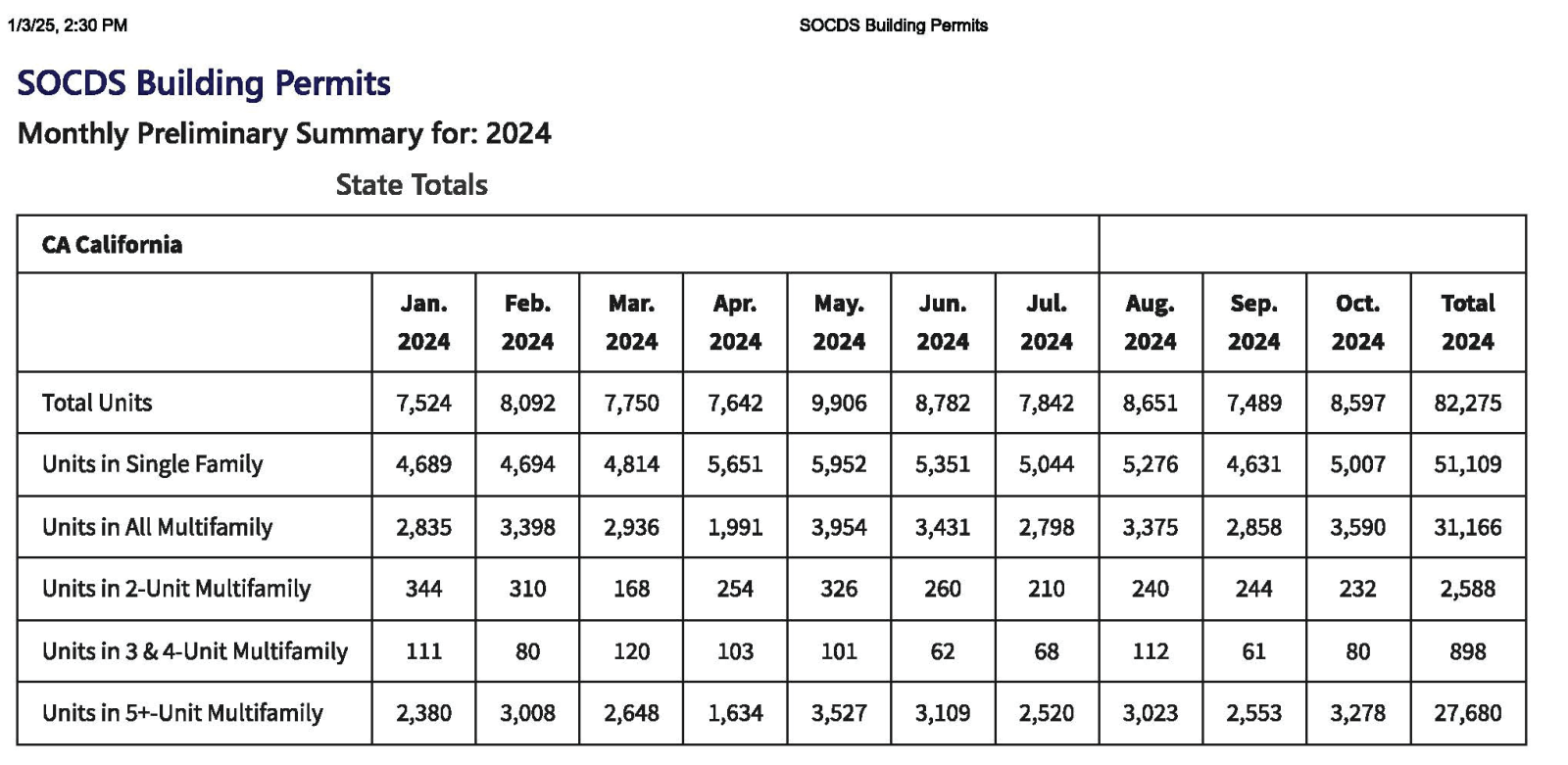
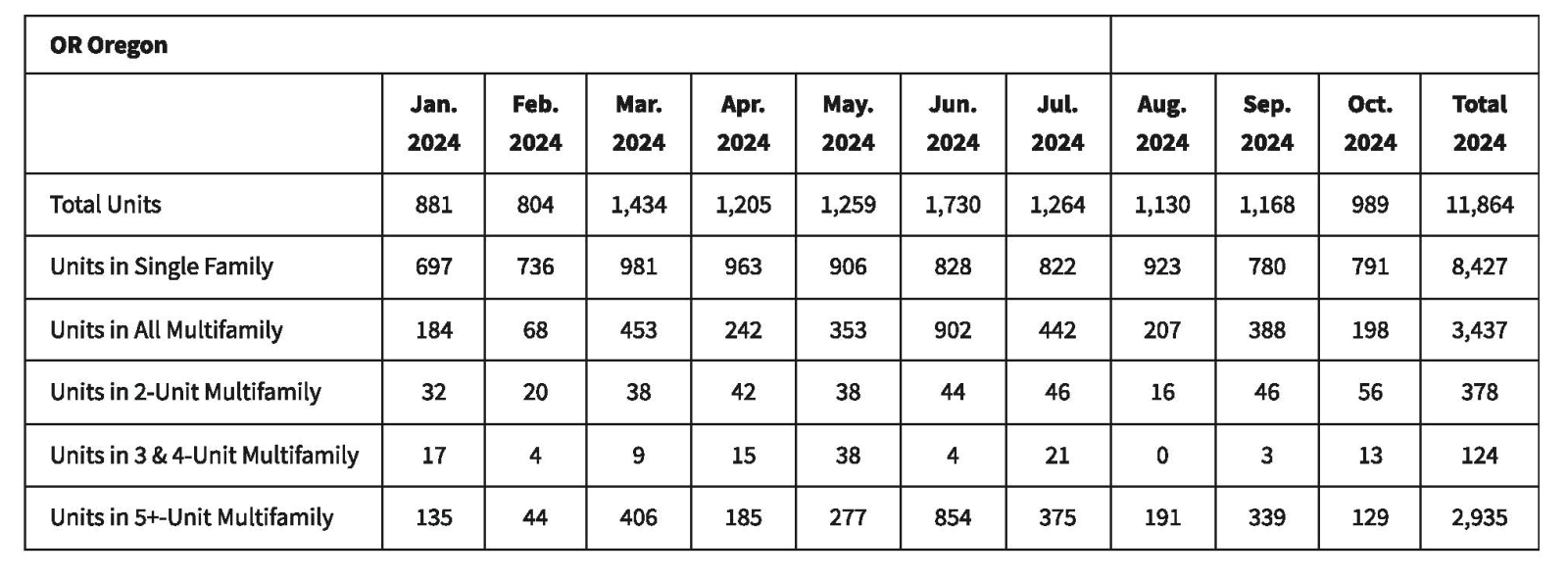
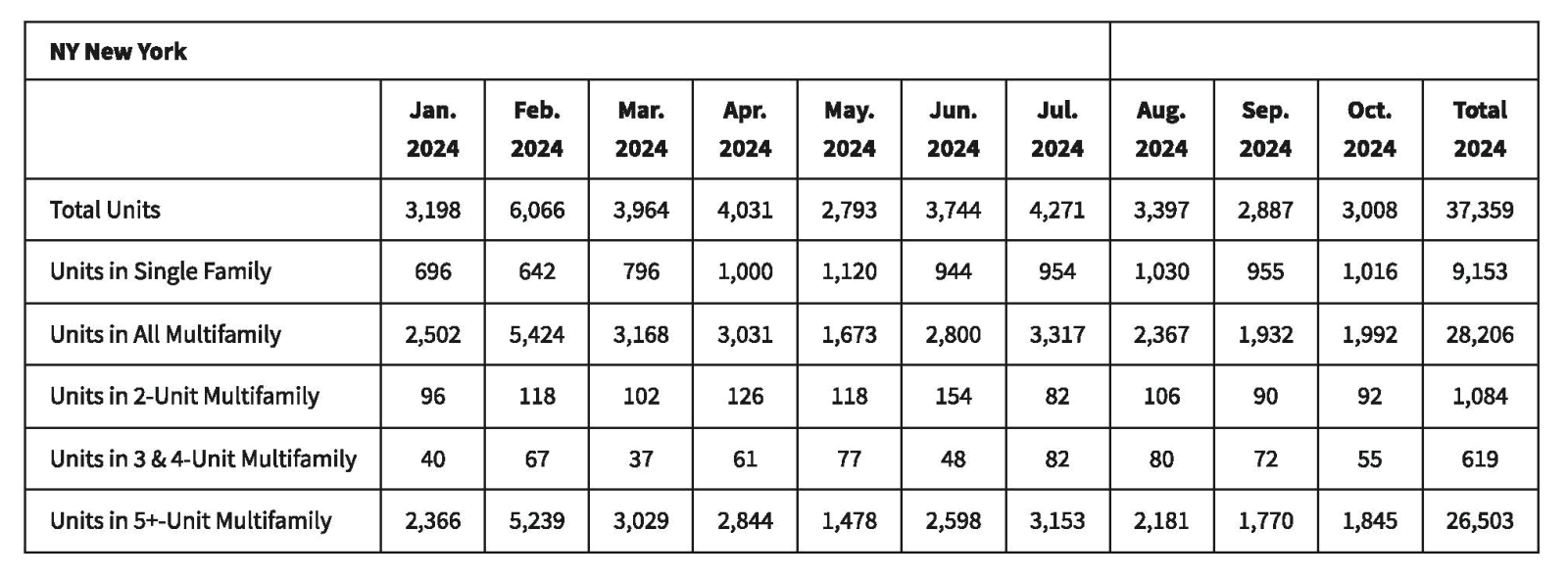
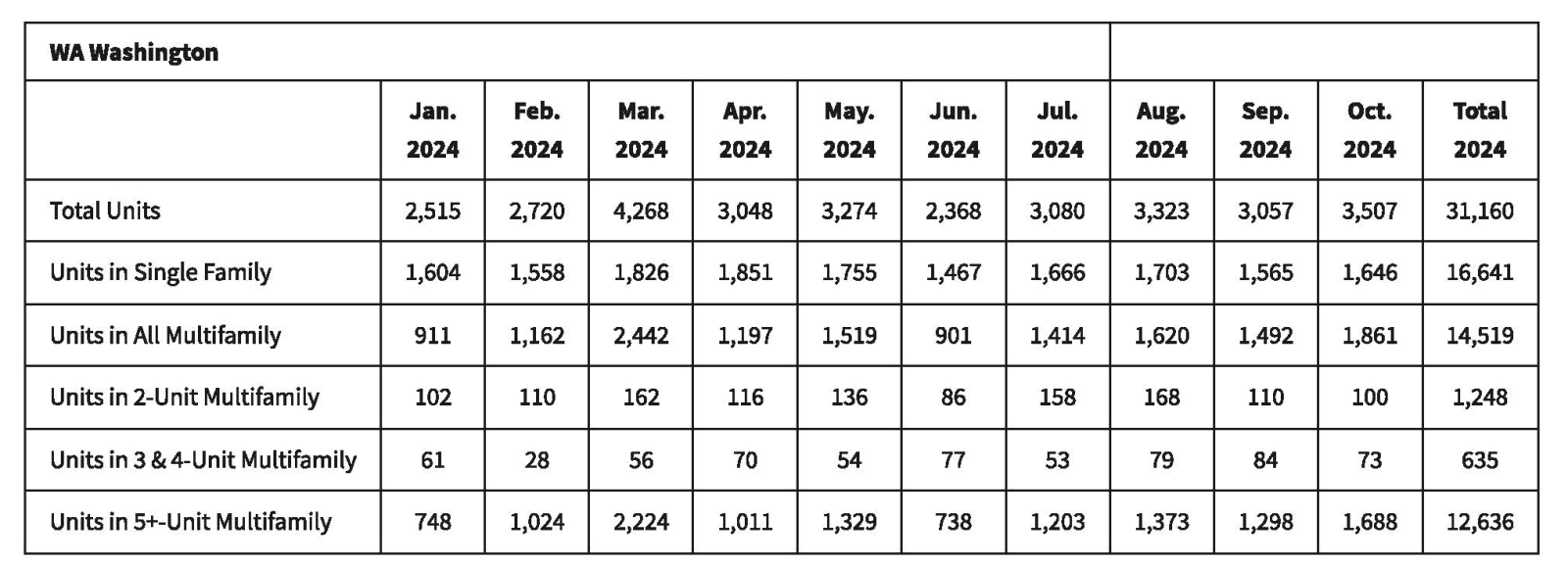

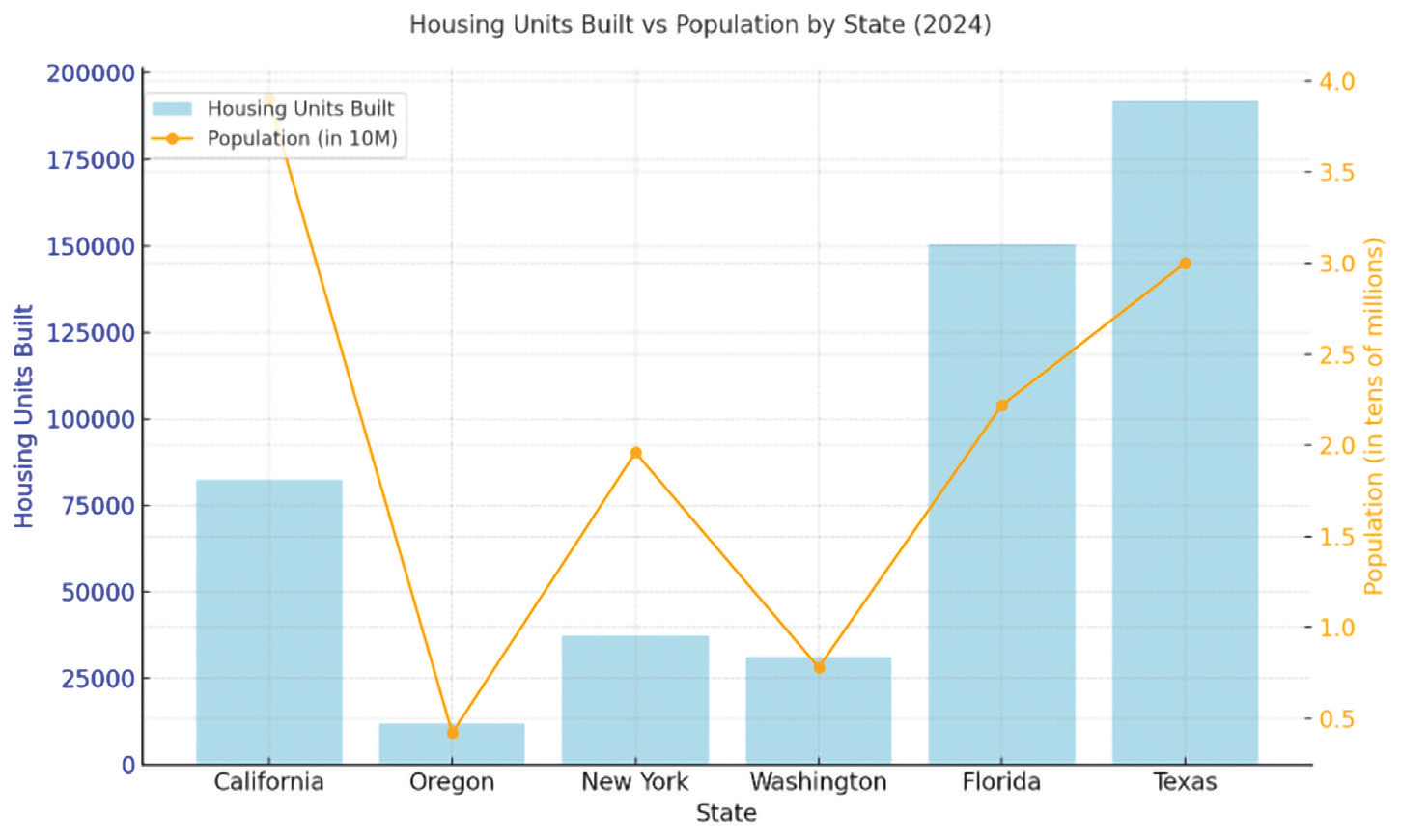
THE TEXAS AND FLORIDA MODELS: A BLUEPRINT FOR SUCCESS
Texas and Florida demonstrate that aggressive housing production benefits everyone—tenants, housing providers, and communities alike.
Florida: Building Despite Hurricanes
In 2024, Florida issued over 150,000 building permits—the second-highest in the nation—despite facing frequent hurricanes. Pro-development policies in high-supply markets, like Fort Myers, led to a remarkable 12.7% drop in rents. Florida’s resilience highlights how prioritizing housing supply can overcome even significant external challenges.
Texas: Housing a Growing Population
Leading the nation in 2024 with nearly 192,000 building permits, Texas showcases the results of zoning flexibility and reduced development barriers. In cities like Austin, these supply-focused policies contributed to an 11.9% decline in Class C apartment rents, proving that housing abundance directly benefits affordability.
Why Isn’t Washington Talking About This?
While Washington policymakers may hesitate to emulate Texas or Florida, the success of these states highlights the transformative power of pro-development strategies. Overlooking these models means missing proven, actionable solutions to the housing crisis. Isn’t it time Washington critically examines the role of deregulation and streamlines housing provider-tenant laws in creating a sustainable housing future?
REGULATORY MISSION CREEP: SAN FRANCISCO’S CASE STUDY
San Francisco permitted just seven housing units in October 2024—a staggering indicator of how excessive regulation has crippled housing production. Even food bank proposals are rejected over concerns about "historic parking lots," illustrating how regulatory overreach has transformed government from a facilitator to an obstacle.
San Francisco’s average rent of $3,183—despite decades of rent control—underscores how scarcity, driven by excessive regulation, inflates housing costs.
Lesson for Washington: Unless Washington takes decisive action to streamline regulations and prioritize housing production, it risks replicating San Francisco’s housing crisis.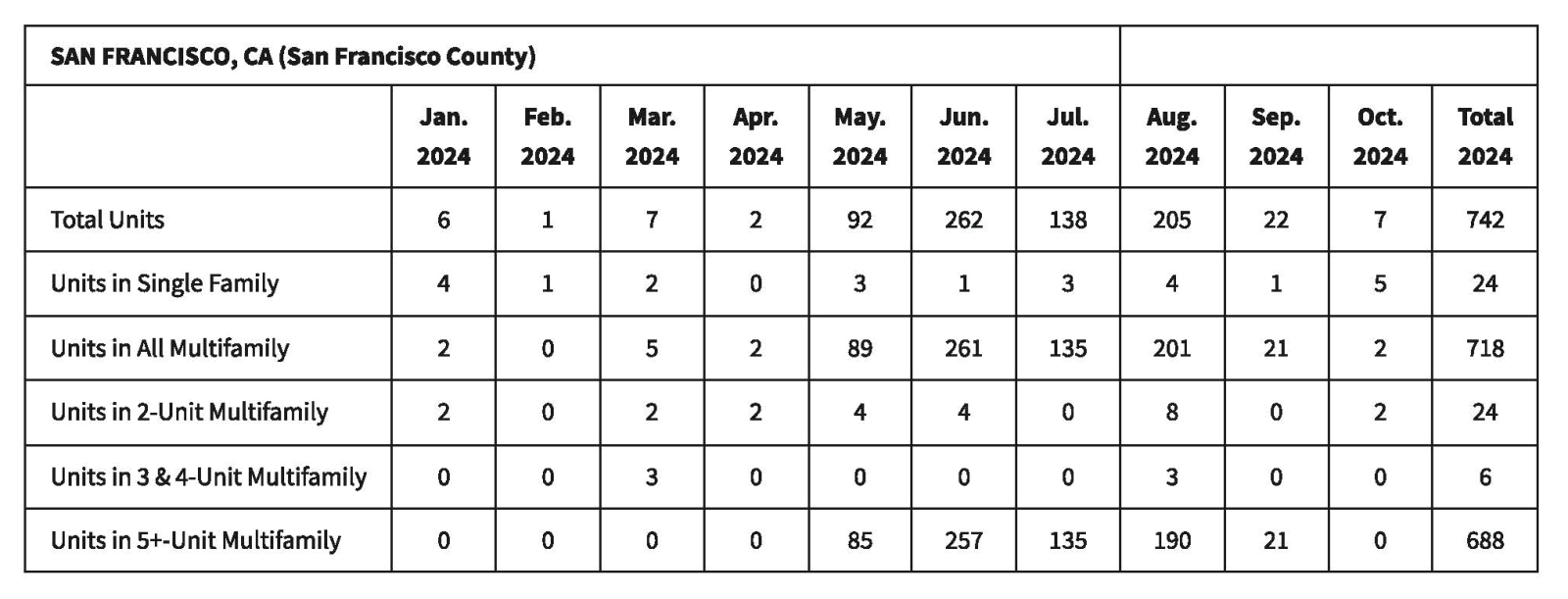
WHY BUILD MORE HOUSING IF RENT CONTROL MAKES INVESTMENTS MORE VALUABLE?
In housing, as in strategy, every action has ripple effects. Regulations like rent control distort the market’s natural balance, creating unintended consequences. By capping rents, these policies force housing providers to absorb costs, leading to deferred maintenance, declining quality, and reduced investment. Over time, the housing market stagnates, leaving tenants and providers worse off.
Newton’s Third Law states that for every action, there is an equal and opposite reaction. In housing, this principle applies to cost-shifting caused by regulations. When new costs arise—such as higher wages or taxes—businesses adapt by raising prices. For housing providers, this adjustment typically results in higher rents. Rent control disrupts this balance by capping rents, stripping housing providers of the flexibility to respond to rising costs. Over time, this leads to deferred maintenance, declining property quality, and reduced investment in new housing. These unintended consequences harm tenants by diminishing housing stock quality and availability, further compounding affordability challenges.
Why Supply Matters
Rent control doesn’t reduce costs; it merely shifts them, creating hidden burdens that harm housing providers and tenants alike. Expanding housing supply is the proven way to stabilize rents and ensure long-term affordability. Supply-driven policies promote ongoing investment in maintenance and new development, offering sustainable solutions for renters and providers.
BUYING VS RENTING: THE CURRENT LANDSCAPE
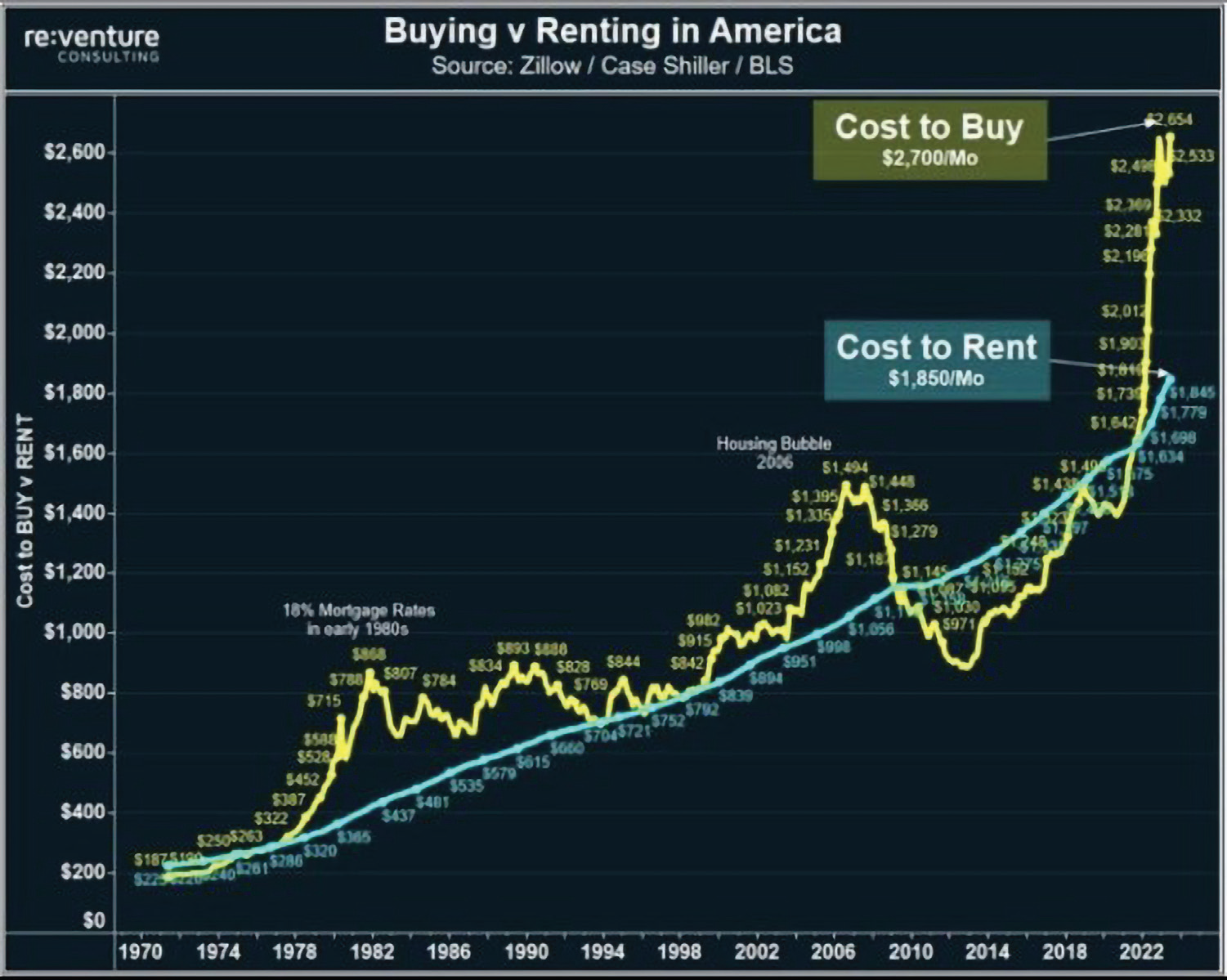 The current housing market features the highest disparity between the cost to buy and the cost to rent in recent history. For many, renting has become the most affordable and practical option, especially given the soaring costs of property acquisition, financing, and administration.
The current housing market features the highest disparity between the cost to buy and the cost to rent in recent history. For many, renting has become the most affordable and practical option, especially given the soaring costs of property acquisition, financing, and administration.
The Role of Cost-Shifting in Affordability
For housing providers, the ability to adjust to rising costs is essential for maintaining operations and preserving property quality. Rent control policies block this flexibility, forcing providers to absorb costs at the expense of maintenance and investment. By contrast, policies that increase housing supply allow markets to self-correct. Greater supply keeps rents competitive and enables housing providers to manage expenses sustainably.
For tenants, renting offers a more accessible alternative to buying in today’s market. For housing providers, fostering supply growth is critical to stabilizing rents and ensuring long-term affordability for everyone.
RENT CONTROL KILLS HOUSING AND AFFORDABILITY
The Most Expensive States for Renters
- Hawaii: $2,909
- California: $2,803 (Rent control exists)
- Massachusetts: $2,461 (Had rent control until the mid-1990s; Recent stabilization efforts)
- New York: $2,335 (Rent control exists)
- Washington: $2,295 (Rent stabilization efforts in progress)
- Oregon: $1,919 (Rent control exists)
States with rent control consistently dominate the list of the most expensive places for renters. These policies create scarcity, raising housing costs for everyone outside of controlled units while failing to address affordability.
The Most Expensive Cities for Renters
- San Jose-Sunnyvale-Santa Clara, CA: $3,811
- San Diego-Chula Vista-Carlsbad, CA: $3,228
- San Francisco-Oakland-Fremont, CA: $3,183
- Los Angeles-Long Beach-Anaheim, CA: $2,848
- Seattle-Tacoma-Bellevue, WA: $2,733
California cities dominate these rankings, underscoring the long-term consequences of rent control policies that stifle housing production. Seattle’s high costs suggest that Washington could follow a similar trajectory unless decisive action is taken to incentivize building and expand housing supply.
THE ALTERNATIVE: BUILD MORE HOUSING
Focusing on increasing housing supply through building incentives and zoning reforms offers a proven solution to affordability challenges. By prioritizing housing production, states can:
- Stabilize the rental market by creating tens of thousands of new units to meet demand.
- Attract billions in private investment, driving economic growth.
- Generate thousands of jobs annually in construction, real estate, and related industries.
- Provide renters with more choices in where and how they live.
- Lower rents in affordable housing by increasing competition.
- Reduce reliance on taxpayer subsidies, shifting the burden from public funding to sustainable private investment.
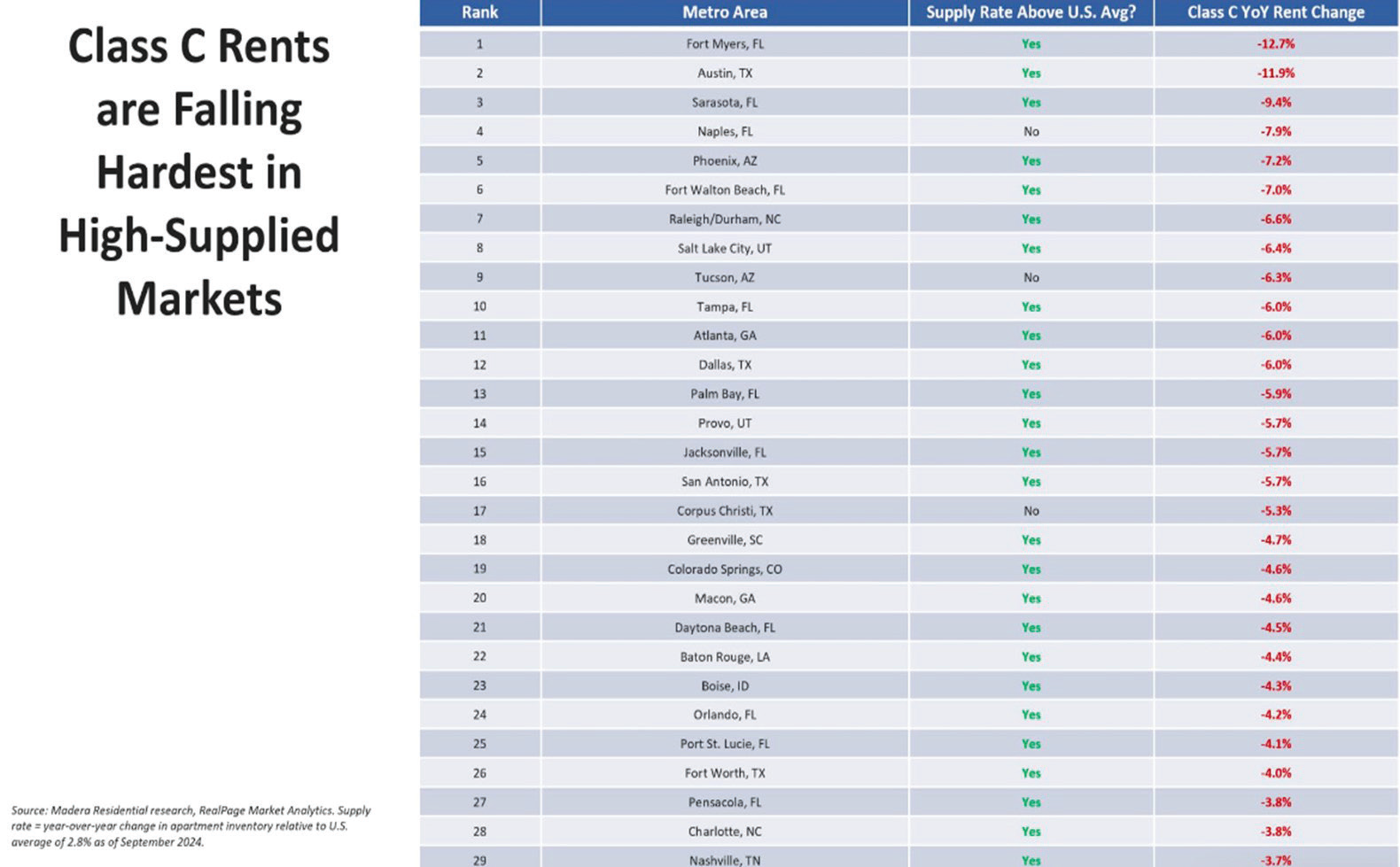 Class C Rents Decline in High-Supply Markets
Class C Rents Decline in High-Supply Markets
Data shows that markets with above-average supply growth (2.8% YoY) experience significant rent reductions, particularly in Class C apartments, which are often the most vulnerable to rising costs:
- Fort Myers, FL: -12.7%
- Austin, TX: -11.9%
- Sarasota, FL: -9.4%
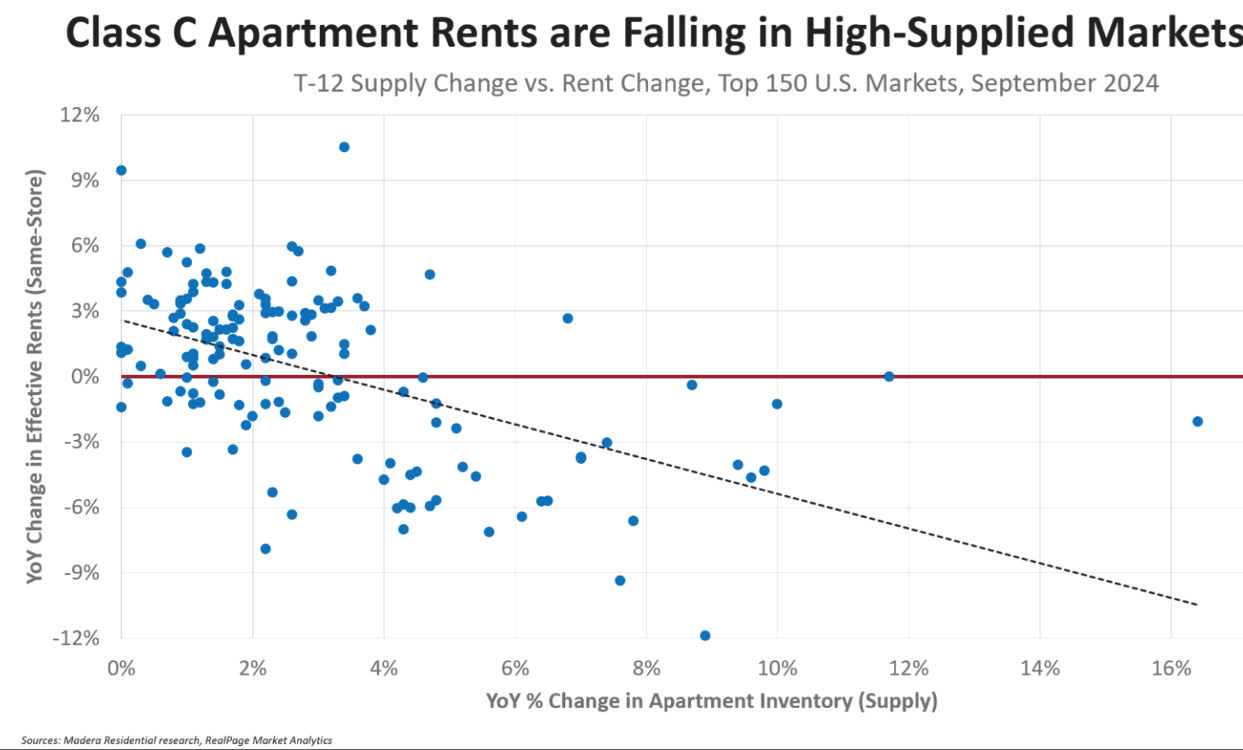
The Impact of Supply Growth
- Negative Correlation: A higher year-over-year (YoY) increase in apartment inventory correlates directly with lower YoY effective rents. This demonstrates how increased housing supply stabilizes rents.
- Class C Apartments: These units, often critical for lower-income renters, benefit the most from increased supply, as competition drives rents downward.
The Solution is Clear
States like Texas and Florida, which prioritize housing production, demonstrate that expanding supply benefits everyone. Rent control, by contrast, stifles production, creating a cycle of rising rents and diminished affordability.
IMPLICATIONS FOR WASHINGTON STATE
To ensure a sustainable housing future, Washington must break free from policies that have consistently failed elsewhere. Instead of repeating mistakes, Washington can lead with policies that promote housing abundance, creating lasting solutions for all.
SETTING THE COURSE: ABUNDANCE AND OPPORTUNITY
Abundant housing and strong property rights are the one-two punch for delivering real results in the housing market. Together, they create a system that works for tenants and housing providers, prioritizing flexibility, sustainability, and growth. The evidence is undeniable: rent control creates scarcity, drives up costs, and harms the very people it claims to help. It weakens housing markets by discouraging investment, leading to deteriorating properties and fewer options for tenants. In contrast, policies that prioritize housing supply lead to stable rents, better-maintained homes, and more opportunities for everyone.
For housing providers, this means advocating for policies that reduce red tape, encourage investment, and reward innovation. For tenants, it means access to housing that’s more affordable, higher quality, and available when they need it most. Washington must not only make a decision; it must make the right one. The data gives us a glimpse into what lies ahead. States that have passed rent control have faced stagnation and worsening affordability, while states that prioritize supply have seen progress. If housing were a game of chess, this is the time to plan several moves ahead. We’ve seen where the current path leads, and it’s time to adjust our strategy.
Abundant housing and property rights are the proven formula for success. By focusing on supply growth and rejecting the dead-end of rent control, Washington can build a housing market defined by affordability, quality, and opportunity for today and for generations to come.

